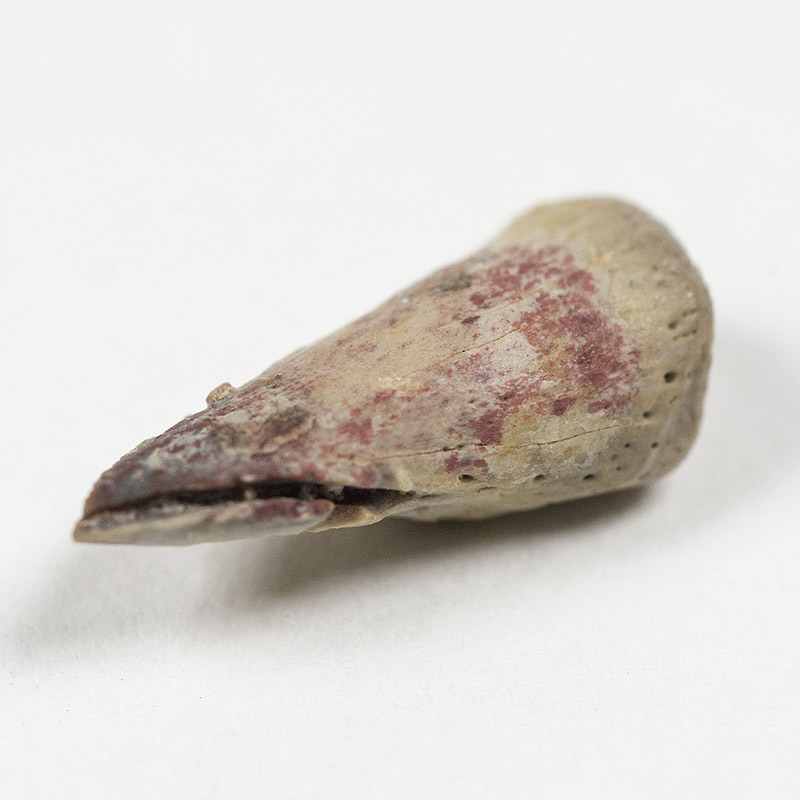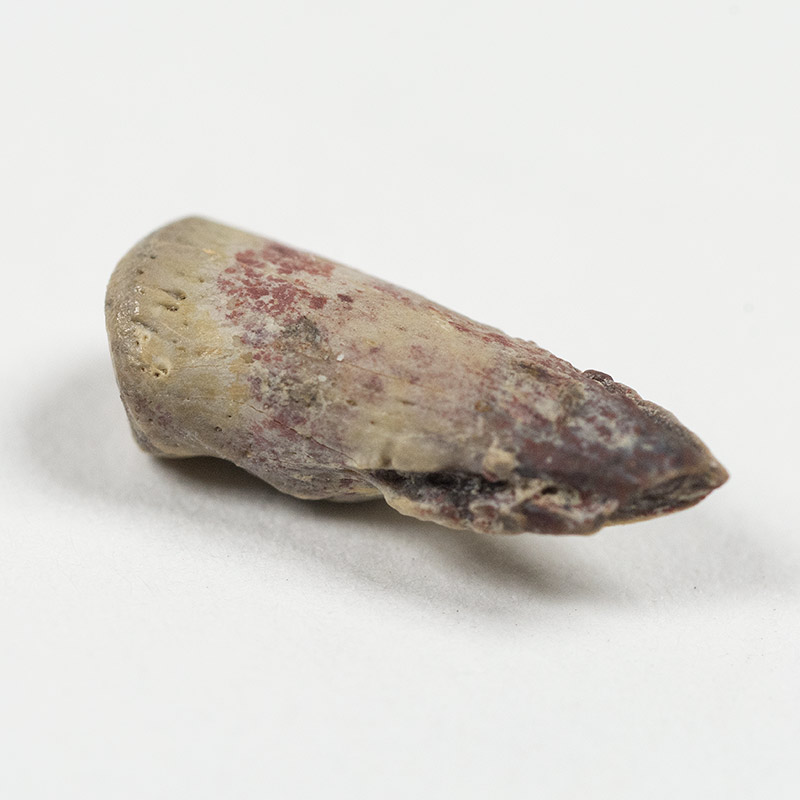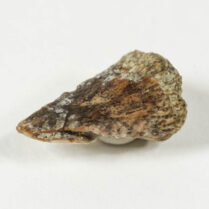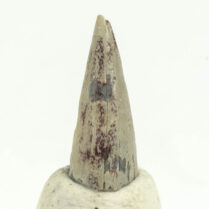Description
Early Permian
Wellington formation
Waurika site, Jefferson County, OK, USA
11mm amphibian claw
Amphibian,
This amphibian claw shows no distinguishing features for a confident identification to genus so we won’t guess.
The labyrinthodonts were among the dominant land animals from the Devonian to Permian, even surviving the cataclysmic end-Permian mass extinction event. The group is now considered an evolutionary grade which means it’s a once-official group that has become rather loosely-defined by modern standards with members that aren’t closely-related. In other words it’s a group of similar organisms that do not have a common ancestor but the name remains in discussions because of its historical usage.
“Labyrinthodont” refers to the maze-like pattern of infolding of the dentin and enamel of the teeth. These animals seemed to have disappeared from the fossil record at the end of the Triassic until more fossils were later discovered in the Early Cretaceous of Australia.






